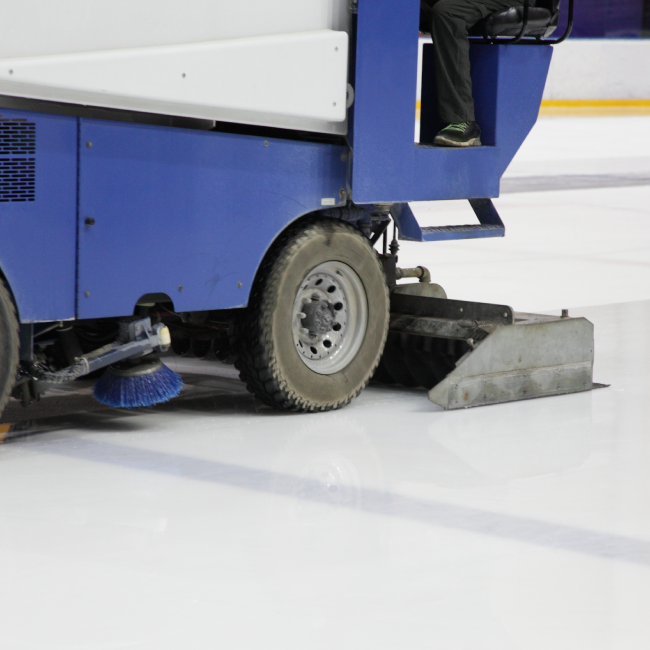Ice problems
Ice represents a solid state of water. Water freezing and ice melting are affected by the particles present in the water. From a general user point of view, the problems are related to nucleation, so by converting the liquid state of water into solid (ice), and maintaining a solid structure at the appropriate quality for various uses such as hockey, figure skating, public skating, food and gastronomy
In sports activities where the ice rink is groomed by ice resurfacer, there is a precisely defined period of time, approximately 12 minutes, which is used to cool and groom the rink. Despite the maximum output of the refrigeration compressors, which is 100 to 150 kW, the required ice quality is not achieved due to a short break in the game.
The benefits of making ice from treated water through Treasure ©

Excellent ice quality
As the ice is kept solid 1 to 2 times longer than standard, it is dry and melts more slowly.

Faster freezing
The water changes to a solid state after only 4 minutes (with untreated water, the freezing time is 12 minutes or more).

Treatment without heating
Groove treatment without heating the ice resurfacer.

Savings of up to 60%
It can save 20 – 60% of electricity consumption in the process of production and surface treatment.

Less cooling cycles
Cooling cycles are delayed and reduced, saving both time and technical equipment depreciation.

The ice rink made of modified water is colder on its surface, even while maintaining the standard temperature of the concrete slab and the standard thickness of the ice surface. The lower surface temperature of the ice rink along with the faster solidification of the water, is an advantage when treating the ice rink during breaks between hockey periods, prior to individual shootouts, or during operation in the warmer months, when it maintains the proper ice quality. In cases where the lower surface temperature of the ice rink is operationally unnecessary, from economical point it is possible to increase the temperature of the concrete below it, as the ice surface produced and treated with modified water warms more slowly. Treated water can extend the time between cooling cycles throughout the day.
Treatment of water or any coolant circulating in the cooling systems saves electricity consumption by at least 15-20%.
The result is quality and saving

Accelerated process
Treated water has the properties of a faster cooling and freezing process. Faster water cooling has a beneficial effect on cooling systems designed for ice production and freezing. The time of individual cooling cycles is shortened, thus reducing the consumption of operating hours and kWh of electric motors, as well as the depreciation of compressors, pumps and cooling tower fans.

Financial savings
We guarantee minimum economic savings of 15 to 20% of current costs associated with ice production or maintenance of the ice rink.

High quality ice
By high quality ice we mean the resistance of ice to higher temperatures, so its slower melting and evaporation. The ice remains solid longer.
